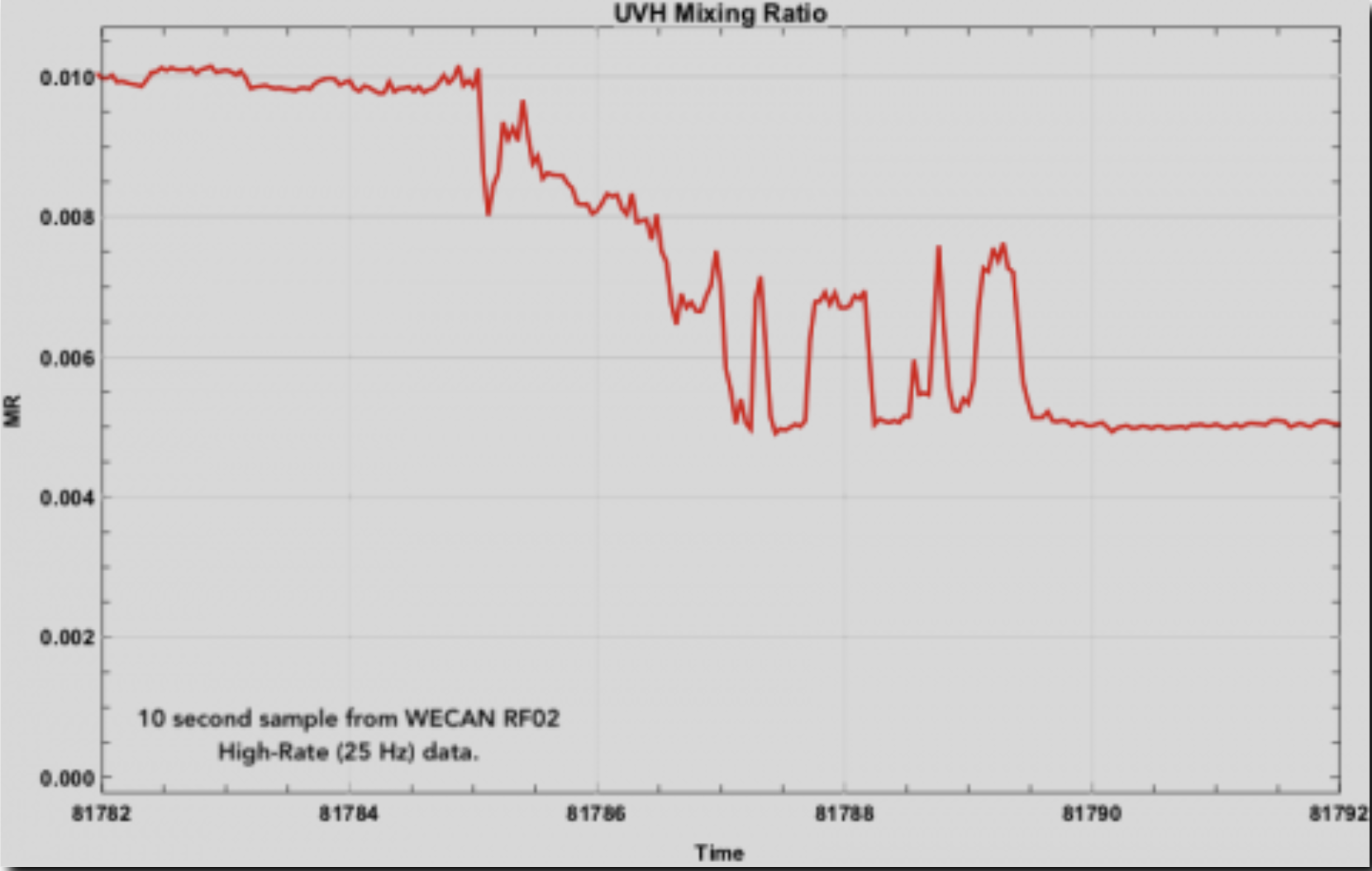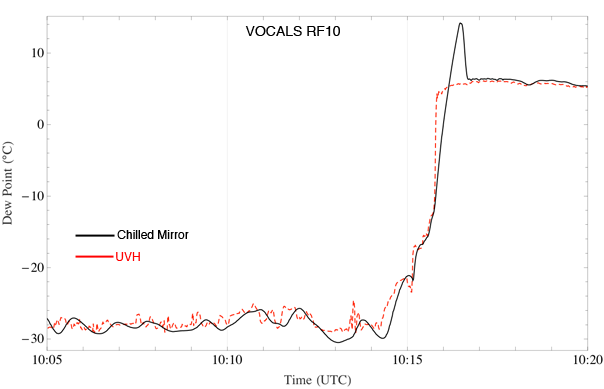Ultraviolet absorption hygrometer
The UV Hygrometer measures the absorption by water vapor of vacuum-ultraviolet light at the Lyman-alpha wavelength of atomic hydrogen (121.6 nm). Air from outside the aircraft is brought to the absorption cell by a forward facing open-ended cone inlet (SCAI inlet) and exhausted through a scarf tube. The shortest possible absorption path-length, 2.4 mm, is used for high water vapor mixing ratio conditions, 2-15 g/kg. Lower mixing ratios can be measured at low ambient pressure (high altitude) using a longer path length, but the range still limited to about a factor of 10 variation. Low mixing ratios are difficult to measure at low altitude because of vacuum-UV absorption by atmospheric oxygen. Because of variation introduced by temperature and altitude changes this sensor provides best data when the flight pattern has extended periods at constant altitude.
Measurements Provided: The fundamental measurement is the water vapor number density, determined by UV (Lyman-alpha) absorption. This is converted to a mixing ratio, dew point, etc..
Typical Sampling Rates: 25 samples per second
Measurement Characteristics:
- Overall estimate of uncertainty: 0.5°C for mixing ratios of 2-15g/kg
- Response time: >35Hz (-3dB analog bandwidth).
- Precision: Noise in mixing ratio is about 0.5% for mixing ratios of 2-15g/kg.
History of Significant Changes: 3/2013: Rev. 2.0 - Detector pre-amp moved to detector board at end of sample cell. Other electronics and power supply in 1U rack box. 8/2014: Lamp replaced, including spare. New design from Resonance, Inc.
Example(s) of Measurement:


Full calibration requires the Kahn or RH System G3 dew-point generators to generate a range of humidities at various pressures and temperatures. With this calibration one can generate calibration constants for H2O and air interference, then use the pressure and temperature data to calculate mixing ratio. It also requires fitting to an aircraft reference to account for slow drift.
Ordinarily RAF generates a calibration based on in-flight data by performing a regression analysis of the UV Hygrometer against a slow but accurate sensor such as the chilled mirror dew point sensors or a commercial sensor such as is available from Aerodyne, Picarro, and others. The regression includes terms to account for atmospheric oxygen absorption and UV lamp drift. From this calibration and using the high-rate (25 Hz or faster) cell temperature and pressure values, the high-rate water vapor number density in the absorption region is calculated. This is then converted to mixing ratio, dew point, etc.